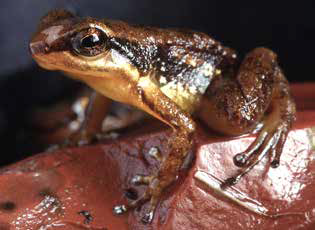 W
WAnomaloglossus breweri is a species of frogs in the family Aromobatidae. It is only know from its type locality, Aprada-tepui in the Bolívar state of southeastern Venezuela. This species was discovered by scientists exploring the inaccessible and remote region of Aprada-tepui. It is a fast-moving frog that lives along creeks and in quiet pools along small streams along the slopes near the cave. The frog is named for Charles Brewer-Carías who collected the type series.
 W
WAnomaloglossus parkerae is a species of frog in the family Aromobatidae. As currently known, it is endemic to Venezuela and is only know from near its type locality in the La Escalera, the Bolívar state, Venezuela, near the Guyanese border. However, its range is expected to extend southward to the Gran Sabana as well as into the adjacent Guyana. The specific name parkerae honors Dr. Nancy Parker, undergraduate adviser of one of the scientists who described the species.
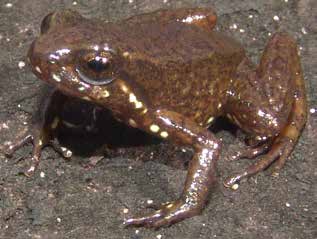 W
WAnomaloglossus rufulus is a species of frog in the family Aromobatidae. It is endemic to Venezuela where it is known from a few tepuis in the Chimantá Massif in the Bolívar state.
 W
WAnomaloglossus triunfo is a species of frog in the family Aromobatidae. It is endemic to Venezuela and is only known from the summit and slopes of Cerro Santa Rosa, on the northwestern slopes of Sierra de Lema, Bolívar state. It might be synonym of Anomaloglossus parkerae. The specific name triunfo is the name of the camp site that was used as the base for herpetological surveys by one of the scientists who described the species.
 W
WAnomaloglossus wothuja is a species of frog in the family Aromobatidae. It is endemic to Venezuela and is only known from its type locality, the base of Cerro Sipapo, in the Amazonas state. It appears to be endemic to the Cerro Cuao massif but might occur more widely in similar granitic areas.
 W
WAtelopus cruciger, also known as the Veragua stubfoot toad or Rancho Grande harlequin frog, is a species of toad in the family Bufonidae. It is endemic to Venezuela and is known from the central Venezuelan Coastal Range. The species was already suspected to be extinct because, despite considerable effort, none had been found since 1986. However, in 2003, a small population was found, with few other locations discovered later. It is mainly threatened by chytridiomycosis. It is locally called sapito rayado.
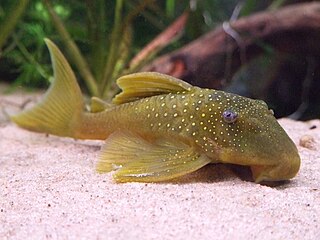 W
WBaryancistrus demantoides is a species of armored catfish endemic to Venezuela. It reaches a length of 15.1 centimetres (5.9 in) SL.It lives around granite rocks in flowing water, in the upper parts of Orinoco River.
 W
WCrotalus vegrandis is a venomous pitviper species found only in Venezuela in South America.
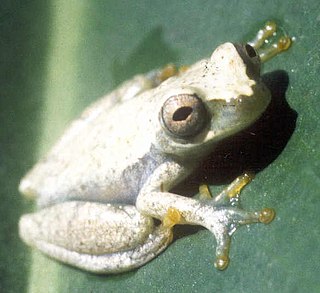 W
WDendropsophus luteoocellatus is a species of frog in the family Hylidae. It is endemic to Venezuela. Its natural habitats are subtropical or tropical moist lowland forests, subtropical or tropical moist montane forests, freshwater marshes, pastureland, rural gardens, heavily degraded former forest, urban sewer systems and ponds.
 W
WDischidodactylus duidensis is a species of frog in the family Craugastoridae. It is endemic to Venezuela and only known from its type locality, Cerro Duida. It was formally described in 1968 by Juan A. Rivero, even though the type series was collected 40 years earlier by George Henry Hamilton Tate.
 W
WFernandez's sword-nosed bat is a species of bat in the family Phyllostomidae. It is the smallest species of the Lonchorhina genus. It is endemic to Venezuela. In 2013, Bat Conservation International listed this species as one of the 35 species of its worldwide priority list of conservation. It is threatened by habitat loss. It derives its scientific name from a Venezuelan zoologist, Dr. Alberto Fernandez Badillo, whose research focused on vampire bats, in particular.
 W
WThe fiery squirrel is a rodent in the family Sciuridae. The taxon is endemic to the area south of the Orinoco River in the state of Bolívar, Venezuela.
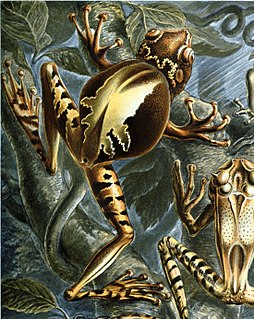 W
WGastrotheca ovifera is a species of frog in the family Hemiphractidae. It is endemic to northern Venezuela and is known from the Venezuelan Coastal Range, including Sierra de Aroa.
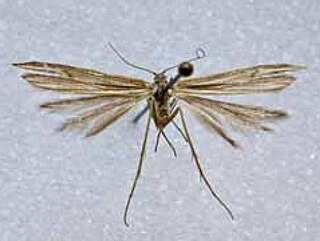 W
WHellinsia batallonica is a moth of the family Pterophoridae. It is found in Venezuela.
 W
WHellinsia montezerpae is a moth of the family Pterophoridae. It is found in Venezuela.
 W
WHumboldt big-eared brown bat is a species of vesper bat in the family Vespertilionidae. It is found in Colombia and Venezuela.
 W
WLuis Manuel's tailless bat is a species of bat in the family Phyllostomidae. It is endemic to Venezuela and the eastern slope of the Cordillera Oriental of Colombia.
 W
WLymnaea meridensis is a species of air-breathing freshwater snail, an aquatic pulmonate gastropod mollusc in the family Lymnaeidae, the pond snails.
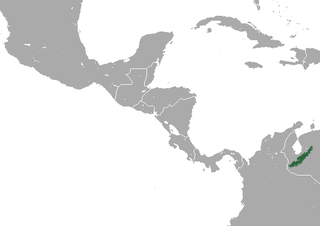 W
WThe Merida small-eared shrew is a species of shrew that is endemic to Venezuela.
 W
WThe Monte Duida tree frog is a species of frog in the family Hylidae. It is endemic to Venezuela and only known from the Cerro Duida, its type locality in the Amazonas state of southern Venezuela. Its natural habitat is montane tepui vegetation, specifically forest and shrubs adjacent to rivers, streams, and peat bogs. No significant threats to this species occurring in the Duida-Marahuaca National Park are known.
 W
WThe narrow-headed slender opossum is a species of opossum in the family Didelphidae. It is endemic to Venezuela.
 W
WThe eastern mountain coati or eastern dwarf coati is a small procyonid found in cloud forest and páramo at altitudes of 2,000–4,000 metres (6,600–13,100 ft) in the Andes of western Venezuela. Until 2009, it was usually included as a subspecies of the western mountain coati, but the eastern mountain coati is overall smaller, somewhat shorter-tailed on average, has markedly smaller teeth, a paler olive-brown pelage, and usually a dark mid-dorsal stripe on the back. When the two were combined, they were rated as Data Deficient by the IUCN, but following the split the eastern mountain coati is considered endangered.
 W
WOidaematophorus nigrofuscus is a moth of the family Pterophoridae that is endemic to Venezuela. The type location is Páramo de Piedras blancas.
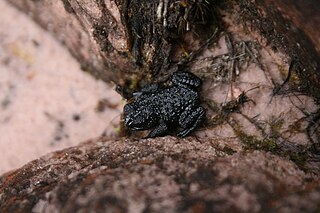 W
WOreophrynella nigra, or pebble toad, is a species of toad in the family Bufonidae. It is endemic to the Guiana Highlands in Bolívar State, Venezuela, and known from two tepuis, Kukenan-tepui and Yuruani-tepui, both belonging to the Eastern Tepuis.
 W
WPanaqolus maccus, commonly called the clown panaque, clown plecostomus, clown pleco, or ringlet pleco, is a dwarf loricariid. By numbering systems such as the L-number system, this fish may also be known as L104, L162, or LDA22.
 W
WPoecilia wingei, known to aquarists as Endlers or Endler's livebearer, in the genus Poecilia, is a small fish native to the Paria Peninsula in Venezuela. They are prolific breeders and often hybridize with guppies. These very colorful hybrids are the easiest to find being offered in pet-shops, typically under the name Endler's guppy.
 W
WPristimantis cantitans is a species of frog in the family Craugastoridae. It is endemic to Venezuela and only known from its type locality, the summit of Cerro Yaví, a sandstone table-top mountain (tepui) in the Amazonas State. The specific name cantitans alludes to the day-and-night calling behavior of this species and is derived from the Latin cantito.
 W
WPristimantis incertus is a species of frogs in the family Craugastoridae. It is endemic to northern Venezuela where it is only known from its (presumed) type locality near La Guaira. Its natural habitats are tropical moist lowland forests and moist montane forests.
 W
WPristimantis jamescameroni is a species of frog belonging to the family Craugastoridae. It is an orange-brown coloured small frog reported so far only from the Aprada-tepui, a table-top mountain in the Bolívar state of Venezuela. It was discovered in June 2012 and formally described in October 2013 by Belgian biologist Philippe J. R. Kok at the Royal Belgian Institute of Natural Sciences and Vrije Universiteit Brussel. The species was named after the Hollywood filmmaker James Cameron, in recognition of his efforts in environmental awareness, and in addition to his public promotion of veganism as a way of animal conservation. Due to its restricted occurrence, the species could be classified as "endangered" according to the criteria of the IUCN Red List of Threatened Species.
 W
WPristimantis pruinatus is a species of frog in the family Craugastoridae. It is endemic to Venezuela and only known from its type locality, the summit of Cerro Yaví, a sandstone table-top mountain (tepui) in the Amazonas State. The specific name pruinatus refers to the frosted appearance of this frog when alive and is derived from the Latin pruina (="frost") and -atus.
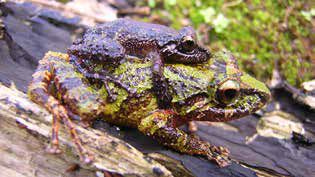 W
WPristimantis riveroi is a species of frog in the family Craugastoridae. It is endemic to Venezuela and only known from the region of the type locality in the Serranía del Litoral in the state of Aragua. The specific name riveroi honours Juan A. Rivero, a Puerto Rican herpetologist. Accordingly, common name Rivero's ground frog has been proposed for it.
 W
WPristimantis yaviensis is a species of frog in the family Craugastoridae. It is endemic to Venezuela and known from its type locality, the summit of Cerro Yaví, a sandstone table-top mountain (tepui), and from Cerro Yutajé, both in the Amazonas State. The specific name yaviensis refers to the type locality.
 W
WReig's opossum is a South American opossum species of the family Didelphidae, discovered in 2004. It is named after Argentine biologist Osvaldo Reig (1929–1992). It was initially found in montane forest in Canaima National Park, Venezuela at an elevation of 1300 m in the Sierra de Lema. It is typically found between 1100 m and 2050 m on Mount Ayanganna.
 W
WThe slender worm lizard is a worm lizard species in the family Amphisbaenidae. It is endemic to Venezuela.
 W
WStefania breweri, also known as Brewer's carrying frog, is a species of frog in the family Hemiphractidae. It is endemic to Cerro Autana, Venezuela, and only known from a single specimen (holotype). It was named for Venezuelan explorer Charles Brewer-Carías.
 W
WStrabomantis biporcatus is a species of frog in the family Craugastoridae. It is endemic to northern Venezuela and known from the Venezuelan Coastal Range and Serranía del Interior. Its natural habitats are humid lowland and montane cloud forests at elevations of 250–1,600 m (820–5,250 ft) above sea level. It is a terrestrial and nocturnal species. It is threatened by habitat loss and degradation caused by agriculture.
 W
WSturisoma festivum is a species of armored catfish endemic to Venezuela where it is found in the Lake Maracaibo basin. This species grows to a length of 16.9 centimetres (6.7 in) SL.
 W
WThe Sucre spiny-rat is a species of rodent in the family Echimyidae. It is endemic to Venezuela.
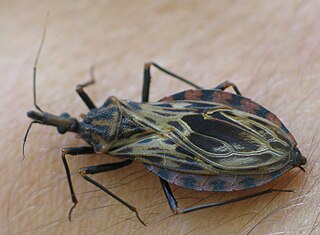 W
WTriatoma nigromaculata is a sylvatic species of insect usually found in hollow trees, in vertebrate nests on trees and occasionally in human dwellings. It usually lives in relatively humid forests at high altitudes on mountain regions and foot hills. As all members of the subfamily Triatominae, T. nigromaculata is a blood-sucking bug and a potential vector of Chagas disease. This species is distributed mainly in Venezuela, but some specimens have also been found in Perú and Colombia (Cauca).
 W
WTyler's mouse opossum is a South American marsupial of the family Didelphidae. It lives in rainforests of the Guiana Highlands of southern Venezuela at elevations between 1300 and 2200 m. The species has only been found on three isolated tepuis. All three of these locations are in protected areas.
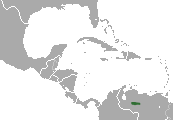 W
WThe Venezuelan lowland rabbit, also known as the Barinas wild rabbit, is a cottontail rabbit species found in western Venezuela. Its diet consists in large measure of plants of the genus Sida. It is found in lowland savannas close to dry forests within the Llanos ecoregion. It is the largest of only three leporids known from South America. Head and body length is about 44 cm, with females being slightly larger. Reproduction takes place over three quarters of the year, with an average of 2.6 embryos per litter, but most commonly during September through December. The gestation period is 35 days. Possible threats to the species include habitat destruction by deforestation and agricultural conversion, competition with grazing livestock and hunting.
 W
WXylophanes sarae is a moth of the family Sphingidae.